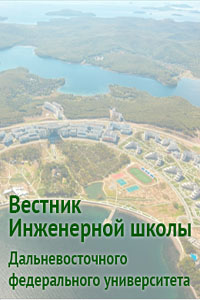A mathematical model for determining the damping coefficient for structural materials
DOI:
https://doi.org/10.24866/2227-6858/2024-3/3-10Keywords:
damping properties, internal resistance, vibrations, damping coefficient, mechanical systemAbstract
At present, the effects of resonance in the coincidence of natural and forced vibrations of mechanical systems are not taken into account in the design of machines, mechanisms and building structures in most cases. These effects are strongly influenced by damping properties of structural materials. In this paper we propose a mathematical model for determining the damping properties of the material of an oscillating mechanical system, taking into account the (internal resistance) damping properties of the material. The main difficulty of this problem is the separation of the damping properties of the material from the general damping characteristics of the oscillating system (external environment, fixation, interaction of parts of the system with each other, etc.). The most obvious damping characteristics of materials are shown on the example of vibrations and their damping in the study of free vibrations of a beam with one degree of freedom (taking into account internal resistance). The proposed mathematical model allows to realise specific numerical solutions quite simply, and it also correlates well with the results of other studies, clarifying their results. The difference between the mathematical model proposed in this paper and the existing solutions is that the internal resistance of the oscillating system material is correctly taken into account.
References
Антоненко С.В. Вибрация судов. Владивосток: Изд-во ДВГТУ, 2007. 148 с.
Водопьянов В.И., Белов А.А. Исследование демпфирующих свойств материалов. Волгоград: ВолгГТУ, 2001. 12 с.
Добрышкин А.Ю., Сысоев О.Е., Сысоев Е.О. Экспериментальная проверка математической модели свободных колебаний пластины с жестко защемленными краями // Труды МАИ. 2023. № 133. URL: https://trudymai.ru/published.php?ID=177656
Иванкова Е.П. Моделирование и оптимизация выбора свойств материалов и структуры многослойных оболочковых форм по выплавляемым моделям // Ученые записки Комсомольского-на-Амуре государственного технического университета. 2021. № 3(51). С. 85–89. https://doi.org/10.17084/20764359-2021-51-85
Прокудин О.А., Рабинский Л.Н., Чан Кует Тханг. Определение динамических характеристик металлополимерного слоистого стержня // Труды МАИ. 2023. № 120. https://doi.org/10.34759/trd-2021-120-06
Сидоров В.Н., Бадьина Е.С., Климушкин Д.О. Модификация функции диссипации Рэлея для численного моделирования внутреннего демпфирования в стержневых конструкциях // Вестник МГСУ. 2024. Т. 19. Вып. 6. С. 960–970. https://doi.org/10.22227/1997-0935.2024.6.960-970
Тарануха Н.А., Журбин О.В. Математическое моделирование колебаний сложных оболочек. Гидроупругая постановка с учетом сопротивления. Владивосток: Дальнаука, 2008. 253 с.
Тарануха Н.А., Мин Ко Ко. Эффект предельного перехода и формулирование на его основе метода для определения и систематизации коэффициентов демпфирования различных конструкционных материалов // Морской вестник. 2023. № 85. С. 42–46.
Тарануха Н.А., Мин Ко Ко. Экспериментальное исследование колебаний стальной балки с целью определения коэффициентов демпфирования материала на основе идеи предельного перехода с помощью лазерного виброметра // Морские интеллектуальные технологии. 2021. Т. 2. № 2(52). С. 117–122.
Феоктистов С.И. Определение растягивающих усилий вдоль образующей пуансона с учётом трения при изгибе с растяжением // Ученые записки Комсомольского-на-Амуре государственного технического университета. 2021. № 1(49). С. 76–82.
Чан Кует Тханг. Идентификация динамических свойств монослоя в металлополимерном слоистом композите // Труды МАИ. № 134. 2024. URL: https://trudymai.ru/published.php?ID=178456
Яблонский А.А., Норейко С.С. Курс теории колебаний. Москва: Высшая школа, 1966. 255 с.
Smirnov V., Smolyakov Yu. Experimental method for structural concrete damping properties evaluation // International Journal for Computational Civil and Structural Engineering. 2022. Vol. 4(18). P. 14–22. https://doi.org/10.22337/2587-9618-2022-18-4-14-22
Strett J. W. (Lord Rayleigh) The Theory of Sound. Vol. I. London: Macmillan Press, 1945. 503 p.
Downloads
Published
Issue
Section
License
Copyright (c) 2024 Far Eastern Federal University: School of Engineering Bulletin

This work is licensed under a Creative Commons Attribution 4.0 International License.

